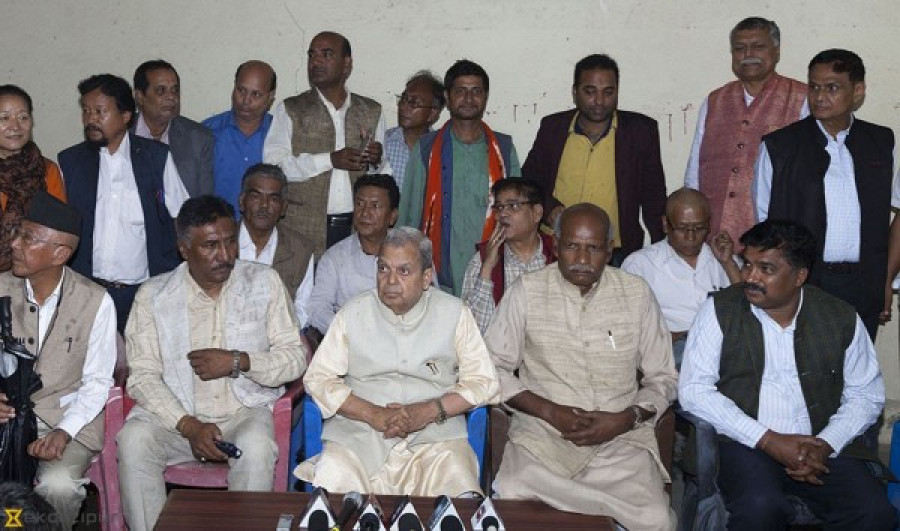National
RJP-N viewed as strong contender in the plains
The Rastriya Janata Party-Nepal, a new force formed after the merger of six Madhes-based parties, has yet to decide to participate in the June 28 elections but it already appears to be a powerful contender.
Aman Koirala
The Rastriya Janata Party-Nepal, a new force formed after the merger of six Madhes-based parties, has yet to decide to participate in the June 28 elections but it already appears to be a powerful contender.
Some claim that the RJP-N has emerged as one of strongest political forces in central Tarai, which has seen continued protests since the run-up to constitution promulgation in 2015.
Sarlahi, one of the eight districts of the plains-only Province 2, is home to prominent Madhesi leaders Mahantha Thakur, the RJP-N chair, Rajendra Mahato and Mahendra Raya Yadav.
In the 2013 Constituent Assembly election, the Nepali Congress had won two of the six constituencies in Sarlahi while the CPN-UML, the CPN (Maoist Centre), the Tarai Madhes Sadbhawana Party and the Tarai Madhes Loktantrik Party—last two the constituents of the RJP-N—had won one each seat.
“If the unity among the Madhesi parties lasts long, they will be a strong force in the entire Madhes,” said Ugrakanta Jha, a civil society leader.
Analysts say the NC’s dominant position in the district stands challenged by the unity of the regional force. Nabin Adhikari, district secretary of the NC, believes the RJP-N could emerge as a strong political force if it remained united.
RJP-N leaders are preparing internally to contest the polls after three major political parties started their election campaigns.
Another civil society leader, Shivachandra Chaudhary said the RJP-N has the potential to emerge victorious in Madhes if it takes right decisions in relation to the scheduled local elections. He, however, expressed his worry that local unity might be in peril if the Madhesi leaders favour their near and dear ones in candidate selection.
Rebati Panta, district chairman of the UML, said there is a challenge for the other parties to win the elections if the Madhes-based parties are able to retain the support of local cadres and supporters with an unfaltering unity.
“We are strong in 11 of the total 17 local units in Sarlahi,” said Jangilal Raya, a local leader of the RJP-N. He claimed that the party has strong hold in the district after unification.
RJP-N leader Keshav Jha expressed his hope that the united party will become the largest force in the entire Tarai if it participates in the election. But the party has not taken a concrete decision because the government has yet to fulfil all of its demands.
Claiming unification to be the major strength of the party, Jha said the RJP-N was different from other Madhes-based parties as it had not been deviated from its agenda of further empowering the Madhesi people.
Jha predicts that around 70 percent of the total local federal units in the 20 Tarai districts could be under the control of the Madhes-based parties if the Thakur-led RJP-N forms an electoral alliance with the Upendra Yadav-led Sanghiya Samajbadi Forum Nepal and the Bijay Kumar Gachhadar-led Nepal Loktantrik Forum.




 12.12°C Kathmandu
12.12°C Kathmandu















